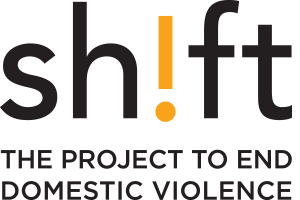What is a community justice approach?
Community Justice Approach
Community justice is an umbrella term for justice approaches that focus on community-level outcomes that support survivors, hold offenders accountable, strengthen positive community norms, and change inequitable structures. Community justice approaches are understood as alternative solutions to our legal system. These practices have long and experienced histories in Indigenous, Black, and racialized communities.
Related terms include alternative justice, transformative justice, reparative justice, restorative justice, and mediation — although there are some distinctions between these approaches. Restorative Justice is founded on the principles of (a) repairing harm, (b) holding offenders accountable, and (c) restoring the community. In practice, restorative justice approaches involve bringing the offender, victim, and community together to discuss the harm committed and the potential resolution strategies.
Transformative Justice goes a step further to proactively stop harm from occurring by addressing root causes of harm and changing harmful and inequitable structures. Community justice approaches also focus on transforming individuals and communities. This is accomplished through building the community members’ knowledge, skills, and capacity to identify and respond to harm appropriately. While also trying to change the community conditions.
We acknowledge that the breadth of alternative justice practices identified in the research are rooted in various Indigenous, Black, and racialized traditions and/or social justice movements. Proper acknowledgement of this history is critical and we recognize that, as we move forward, we cannot ignore the origins of the concepts or the decolonizing commitments it requires of us to engage in this work.
Why use a community justice approach to engage men?
The criminal legal system has caused tremendous damage to many communities, particularly Indigenous, Black, and racialized communities where men are at higher risk of being incarcerated. Community justice approaches provide a valuable alternative for engaging men and rehabilitating those implicated in violent or problematic behaviour in ways that focus on restoration and repair rather than carceral punishment.
What are the most promising ways to use a community justice approach?
Community justice approaches take a radically different view of accountability because they engage offenders as active contributors to a solution. Seeing men as part of the solution instead of only part of the problem is a key strategy for effective engagement.
Community justice approaches also hold considerable potential for helping us move the needle when it comes to rehabilitating offenders and healing victims. That’s because community justice approaches create a sense of shared responsibility for behaviour change. Offenders are better able to understand the consequences of their actions, victims’ needs are listened to, and the community as a whole shares in the responsibility of repairing harm.
Community justice approaches are also important because they give ownership of justice processes back to communities. This is particularly important in marginalized communities, including Indigenous communities, where “outside” law enforcement has fomented distrust and fear.
What is an example of putting a community justice approach into practice?
One example of a community justice approach is the Circles of Support and Accountability (CoSA) Models that have been adapted for post-secondary students found responsible for sexual misconduct.
CoSA programs provide offenders with pro-social support in order to facilitate their re-entry into the campus community. The model uses volunteers who form a “circle” around the ex-offender. Each circle is comprised of one main volunteer who meets with the ex-offender on a daily basis, as well as three to five other volunteers who agree to meet with the ex-offender on a weekly basis. Volunteers not only model pro-social behaviours and relationships, but also help the ex-offender with instrumental needs such as housing and employment. The time for support circles can vary, however, they generally last between 6 -12 months.
Participation in CoSA programs has been shown to reduce the likelihood of reoffending while increasing the successful integration of an offender back into the community.
What else should I know before implementing community justice approaches?
More research and investment are urgently needed on community justice interventions, including those that specifically seek to engage men. Community justice approaches are utilized in more than 80 countries, many of which are in the Global South, as well as in Indigenous communities. We have a great deal to learn from their approach.
It’s also important to know that a community justice approach will not always be appropriate. An important challenge to community justice approaches is that they can inadvertently contribute to women’s vulnerabilities if they don’t “do enough” to hold perpetrators accountable or if they rely on traditional community norms that have subordinated women. Also, some crimes are simply so severe that a community-based response might not be sufficient to address them. More work is needed to understand when and how we can implement a community justice model.
Read more about community justice approaches:
In addition to the Shift research reports listed earlier, the following resources offer further information on community justice approaches:
- David R. Karp & Todd R. Clear – Community Justice: A Conceptual Framework
- Neighbourhood Justice Centre Community Justice: an introduction
- Barnard Center for Research on Women – Transformative Justice (video series) and What is Transformative Justice?
- Caroline Claussen, Sharon Goulet & Lana Wells – Opening the Door Beyond the Legal System: Understanding the Use of Alternative Justice Approaches to Sexual Violence Prevention and Healing in Canada
Read more about other approaches:


